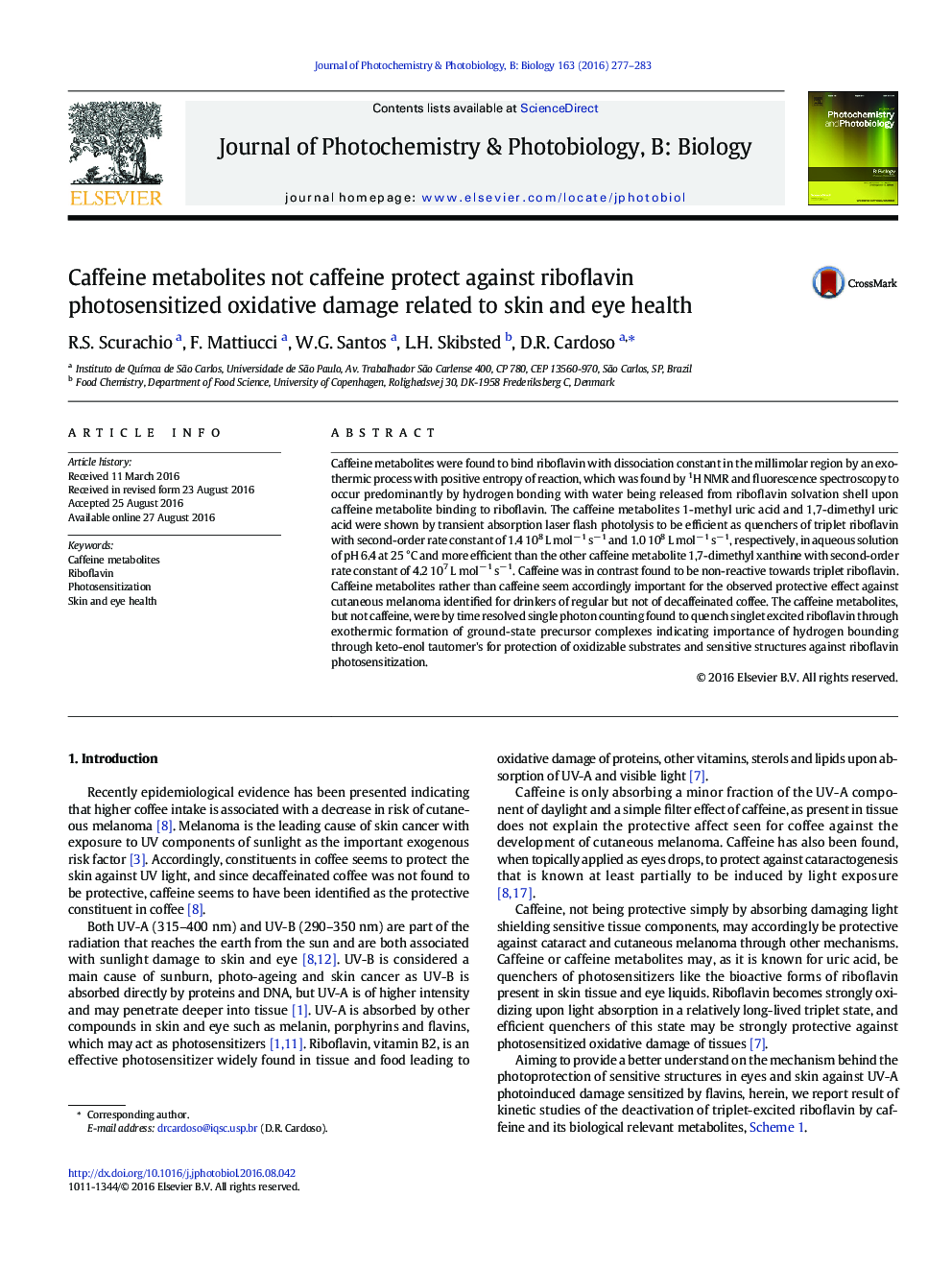| کد مقاله | کد نشریه | سال انتشار | مقاله انگلیسی | نسخه تمام متن |
|---|---|---|---|---|
| 4754674 | 1418070 | 2016 | 7 صفحه PDF | دانلود رایگان |
- Caffeine metabolites was found to quench singlet-excited riboflavin.
- Singlet-excited riboflavin was quenched by ground-state precursor complex formation.
- 1-methyl uric acid and 1,7-dimethyl uric acid are efficient quenchers of triplet riboflavin.
- Caffeine was accordingly found to be non-reactive towards triplet riboflavin.
- Caffeine metabolites seems responsible for the photo-protection identified for coffee drinkers.
Caffeine metabolites were found to bind riboflavin with dissociation constant in the millimolar region by an exothermic process with positive entropy of reaction, which was found by 1H NMR and fluorescence spectroscopy to occur predominantly by hydrogen bonding with water being released from riboflavin solvation shell upon caffeine metabolite binding to riboflavin. The caffeine metabolites 1-methyl uric acid and 1,7-dimethyl uric acid were shown by transient absorption laser flash photolysis to be efficient as quenchers of triplet riboflavin with second-order rate constant of 1.4 108 L molâ 1 sâ 1 and 1.0 108 L molâ 1 sâ 1, respectively, in aqueous solution of pH 6.4 at 25 °C and more efficient than the other caffeine metabolite 1,7-dimethyl xanthine with second-order rate constant of 4.2 107 L molâ 1 sâ 1. Caffeine was in contrast found to be non-reactive towards triplet riboflavin. Caffeine metabolites rather than caffeine seem accordingly important for the observed protective effect against cutaneous melanoma identified for drinkers of regular but not of decaffeinated coffee. The caffeine metabolites, but not caffeine, were by time resolved single photon counting found to quench singlet excited riboflavin through exothermic formation of ground-state precursor complexes indicating importance of hydrogen bounding through keto-enol tautomer's for protection of oxidizable substrates and sensitive structures against riboflavin photosensitization.
Journal: Journal of Photochemistry and Photobiology B: Biology - Volume 163, October 2016, Pages 277-283
